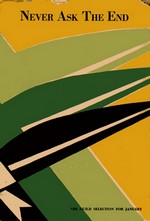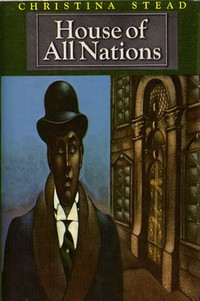
Film and theater director Lindsay Anderson once said, “… when two or three who love the cinema are gathered together, the name of Mary Astor always comes up.” “She was an actress of special attraction”, he went on, “whose qualities of depth and reality always seemed to illuminate the parts she played.” Between 1921 and 1965, she appeared in over 100 films, dozens of plays, and plenty of television dramas, but looking through her list of credits, what strikes us today is that we remember Mary Astor despite the fact that most of her films, aside from The Maltese Falcon and a few others, are pretty forgettable.
What almost no one remembers today, however, is that Mary Astor also had a respectable career as a writer. In her 1971 memoir, A Life on Film, Astor implies that it started “as a sort of assignment to help me during a short period of psychotherapy,” but the version that appears in the book that resulted from this assignment, Mary Astor: My Story, is a little more vivid.
Astor repeats an old joke in A Life on Film about the five stages of an actor’s career:
- “Who is Mary Astor?”
- “Get me Mary Astor.”
- “Get me a Mary Astor type.”
- “Get me a younger Mary Astor.”
- “Who is Mary Astor?”
Somewhere between stages 4 and 5, Astor became depressed over her declining career and ever less-interesting roles, developed a fondness for the bottle, and may have attempted suicide. During her recovery, she was in the care of a Catholic priest and practicing psychologist, Father Peter Ciklic, who encouraged her to write about her life and experiences. According to Astor, the result “was not meant for public eyes, but someone convinced me it should be a book.” She lucked into the support of a fine editor, Lee Barker, at Doubleday, who helped her shape the raw material into finished shape–remarkably, for a celebrity memoir, without the aid of a ghost writer.
Published in 1959, Mary Astor: My Story was one of the first confessional autobiographies to come out of Hollywood. Astor was candid, within the limits of her generation’s standards of discretion, about her affairs, emotional turmoils, and alcoholism. At the time when Donna Reed was still a leading role model, it was a real scorcher and became a best-seller.
For most celebrities, this would have been the end of the story, but Barker then suggested Astor try her hand at fiction, “…and I’ve been hooked ever since.” A year later, Doubleday released her first novel, The Incredible Charlie Carewe.
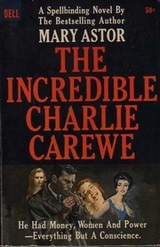
Although it suffers some of the typical construction problems of a first novel, The Incredible Charlie Carewe is a remarkable work that demonstrates “qualities of depth and reality” equal to those Anderson noted in Astor’s acting. Charlie Carewe is the handsome, charming, charismatic son of a wealthy East Coast Establishment family with impeccable bloodlines. On the surface, it seems as if the sky is the limit–no doors are closed to Charlie Carewe.
Unfortunately, something is a bit, well, odd, about Charlie. At first, there is just a sense that his behavior is a bit hard to explain, but given his class and status, his parents, his sister, the help–everyone writes it off to quirks in his character. But then his sister comes across Charlie in the rocks along the shore of their country estate–bashing a playmate’s head into the rocks:
There was absolutely no savagery in the action, no passion or hatred, no viciousness, He looked up briefly as he saw Virginia and Jeff and called out a smiling “Hi!” and then went back to his task. Firmly, purposefully, as though he were occupied in cracking a coconut. In the seconds before movement came back to the paralyzed observers another wave whispered up to the two boys and receded with pink in its foam.
Charlie’s victim is rushed off to the hospital with permanent brain damage and the Carewe’s social finesse is put to the test as they graciously usher out their guests as if nothing more than an unfortunate accident had taken place. The next morning, as he tucks into his breakfast, he asks chattily, “What’s the news on Roger? Did he die?”
The Carewes can recognize that they have something of a ticking time bomb on their hands, but their upbringing and lack of psychological awareness (the incident above takes place in the early 1920s) leaves them helpless when it comes to dealing with it. They shuttle Charlie through a series of elite prep schools, smoothing over matters when he’s quietly asked to leave due to thefts, attacks on other students, or other indiscretions. For a long time, the only person who seems remotely able to accept that Charlie’s actions are more than a little abnormal is his sister Virginia, and even she is at a loss to explain it:
As usual, she thought, she was making a fuss, putting too much importance on Charlie’s behavior. She should be used to it now. Wearily she thought, at least there was one consistency; in any given situation, Charlie could be counted on to do the wrong thing, the inappropriate thing. Nobody, but nobody, could be more charming when he wanted to be. He had, it seemed, a full command of the social graces, and in any gathering, especially of people who were strangers to him, could attract attention with no effort. People would gravitate toward him, toward the sound of his pleasant voice, his contagious laugh; but always he seemed to want to destroy it….
Schools could expel him, friends were quickly made and quickly lost, his contact with any kind of social life was brief, and none of it seemed to matter to him. Nor did it matter that the cumulative effect was destroying a family.
Astor displays a clinical objectivity in leading us through every step along the way as Charlie spreads havoc into the lives of almost everyone he meets. In each situation, the pattern is the same: glittering, showy success followed by abrupt failure due to some or other act of willful brutality. His forms a company, makes a great splash, achieves fame as a tycoon and philanthropist, and within a couple of years is being escorted out by his nearly bankrupted partners. He makes a show of joining the Navy after Pearl Harbor, then weasels his way out by pretending to be a bed-wetter. He drives his wife to divorce and alcoholism, borrows and loses money from friends, seduces wives and ruins friendships.
Not even the incredibly strong defenses of family fortune and status, though, can withstand the destructive force of Charlie’s will, however, and only an unlucky trip on a staircase keeps Charlie from standing alone in a wasteland of his own fallout. What Charlie is, we can now see in a glance with the benefit of much greater awareness, is, of course, a psychopath. The psychiatrist Hervey Cleckley recognized this, citing Astor’s book in the 1964 edition of his classic work on psychopathology, The Mask of Sanity:
In many respects the most realistic and successful of all portrayals of the psychopath is that presented by Mary Astor in The Incredible Charlie Carewe. The rendition is so effective that even those unfamiliar with the psychopath in actual experience are likely to sense the reality of what is disclosed. The subject is superbly dealt with, and the book constitutes a faithful and arresting study of a puzzling and infinitely complex subject. Charlie Carewe emerges as an exquisite example of the psychopath – the best, I believe, to be found in any work of fiction.
The Incredible Charlie Carewe should be read not only by every psychiatrist but also by every physician. It will hold the attention of all intelligent readers, and I believe it will be of great value in helping the families of psychopaths to gain insight into the nature of the tragic problem with which they are dealing, usually in blindness and confusion.
By this point, anyone reading this review who’s been in a bookstore in the last decade can’t help but think of Bret Easton Ellis’ American Psycho. If asked to sum up the book in a single catchphrase, I would have to say, “Imagine American Psycho written by Louis Auchincloss (or Edith Wharton).” Where Ellis writes to shock, Astor writes to show how people of refinement and elaborate rules of conduct respond when faced with pure irrational violence.
The Incredible Charlie Carewe is a remarkable novel not just in the detail and accuracy of its portrayal of a psychopath but in the “depth and reality” of its portrayal of the society in which this particular psychopath operates. Astor is very much in the territory of Wharton and Auchincloss, and she’s clearly deeply familiar with it. This is a novel that has more than a few parallels with the story of the 20th century as a whole, which is one reason it’s a genuine shame that it vanished after a single Dell paperback release in 1963.
Astor went on to write four more novels: The O’Conners (1964); Goodbye Darling, Be Happy (1965); The Image of Kate (1966); and A Place Called Saturday (1968). The last opens with a rape and goes on to tell about the victim’s decision to bear and raise the child that results. Clearly, Astor’s imagination ranged beyond the walls of the senior citizen apartment of which a visitor commented, “My, isn’t this nice! You can sit here and watch the cars go by!”
In her last book, A Life on Film, Astor revisited her life, but this time dealing almost exclusively with her experiences as a working actor, starting with a 1921 two-reeler, “The Beggar Maid”. Astor didn’t come to film: she was shoved into with both hands by her parents, particularly her father, Otto Langhanke, who was summed up by the great director D. W. Griffith as “a walking cash register.” Her first agent changed Lucile Langhanke into Mary Astor. Lucile was too young to understand much of the insidious nature of her father’s actions at the time, and by the time she was able to take some control of her life, she was in her early twenties and a veteran of over thirty films. So she writes:
As well as I know the actress, Mary Astor–every movement, every shade of voice, and I learned to manipulate her into many different kinds of women–she is still not “me.” A year or so ago I flipped on the TV set and then went into another room for a moment. I heard some familiar words and said, “Hey, that’s Mary Astor!” not “Hey, that’s me.”
Astor survived the transition from silents to sound. She recounts in the book all the troubles associated with the early sound recording techniques, which forced actors into behaviors more stilted and artificial than anything seen in the silents. By the start of the 1930s, she was a legitimate star, if not one of the first magnitude. Her life was regularly covered in Photoplay and a dozen other fan magazines, but as likely to be cast in a B-picture like “Red Hot Tires” as in a A-film like “Dodsworth”.
Then, in 1936, her private life became headline news as her husband’s attorneys attempted to introduce her diary as evidence. Although the studio execs managed to get it suppressed, gossip held that its contents were full of lurid sexual details of her affair with the playwright George S. Kauffman and dozens of male film stars. Astor consistently maintained that this was all hogwash, but forever after she was considered as dangerous material: a solid, consistent, and reliable performer but not safe to make a first-rate star of.
Although she gained some of her best parts in the years after the scandal, including her Oscar-winning supporting role in “The Great Lie” (1941), by 1944 she was, at 38, playing the mother of 22 year old Judy Garland in “Meet Me in St. Louis”. She began to think, she writes,
“What’s so damned important about being an actress?” I saw my little world, insulated, self-absorbed, limited. And all the twenty years of hard work seemed sour and futile. It was a partial acceptance of reality, but it was still a bit like a child saying, “You mean there isn’t any Santa Claus?” I wasn’t aware of, nor ready to accept, the fact that the mere doing, the achieving, was the point. Not what I had achieved. For what I had achieved would in due time be forgotten. The doing was important, it was part of my being–of what and who I am.
Ironically, as Mary Astor got less and less to work with in her roles, she made more and more of them. In his forward to A Life on Film, writer Sumner Locke Elliott recalls working with her on a ridiculous 1950s television play intended to showcase the talents of the latest Miss America. She spoke, he writes, in “the voice of the actress who has been through it all; this is the calm of the veteran who can get you through even if the set falls down.” By her last film, “Hush, Hush Sweet Charlotte (1964), her reputation as a professional had reached the point where Bette Davis could turn to director Robert Aldrich and say, “Turn her loose, Robert, you might learn something!”
A Life on Film is a terrific book and it’s entirely due to Mary Astor’s intelligent, ruthlessly honest, and ever ironic voice. This may be the least ego-filled book ever to come out of Hollywood. Astor makes no bones about the creature comforts that one can enjoy as the perks of stardom, but she never confuses film-making as a business of making money by creating distractions. This is a book about craft, about learning to build a character out of two-minute takes and hours and hours and hour of sitting around and waiting, written by a woman who was among the best craftspersons of her era.
If I had to pick just one of Mary Astor’s books for reissue, it would definitely be A Life on Film. As much as I admire and marvel at her accomplishment in The Incredible Charlie Carewe, I have to say I preferred her final memoir. I not only admired it–but I thoroughly enjoyed it and regretted at the end that I was closing the cover on Mary Astor’s last words as a writer.


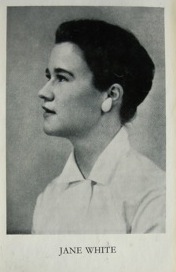 Brooks Peters added the following biographical information, along with a photo of Jane White, from the dust jacket of
Brooks Peters added the following biographical information, along with a photo of Jane White, from the dust jacket of 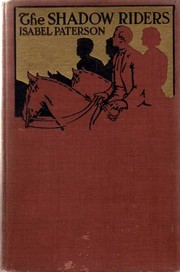
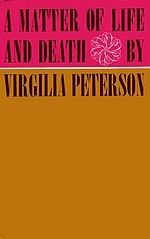

 The problem with the Twenties, as Paterson characterizes it, was not a matter of “doing what you pleased” but doing what everyone else was doing, and doing it thoughtlessly. Despite her deeply individualistic view of life, she admires the Victorians for the effort they put into maintaining their structured morality: “Respectability is a genuine accomplishment,” Mysie says at one point, and of all the characters in
The problem with the Twenties, as Paterson characterizes it, was not a matter of “doing what you pleased” but doing what everyone else was doing, and doing it thoughtlessly. Despite her deeply individualistic view of life, she admires the Victorians for the effort they put into maintaining their structured morality: “Respectability is a genuine accomplishment,” Mysie says at one point, and of all the characters in 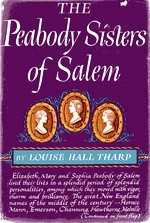 Louise Tharp Hall first celebrated the remarkable sisters in her 1950 collective biography,
Louise Tharp Hall first celebrated the remarkable sisters in her 1950 collective biography, 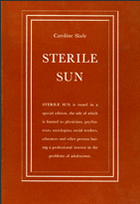 Her first novel,
Her first novel, 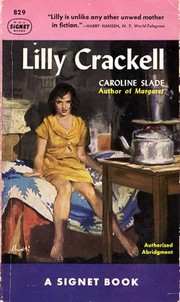 I read
I read 